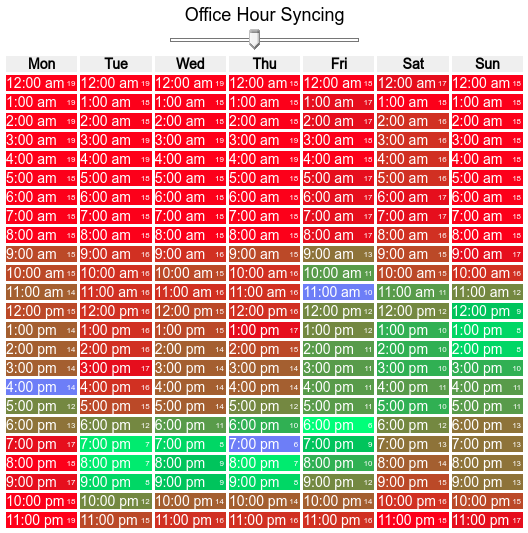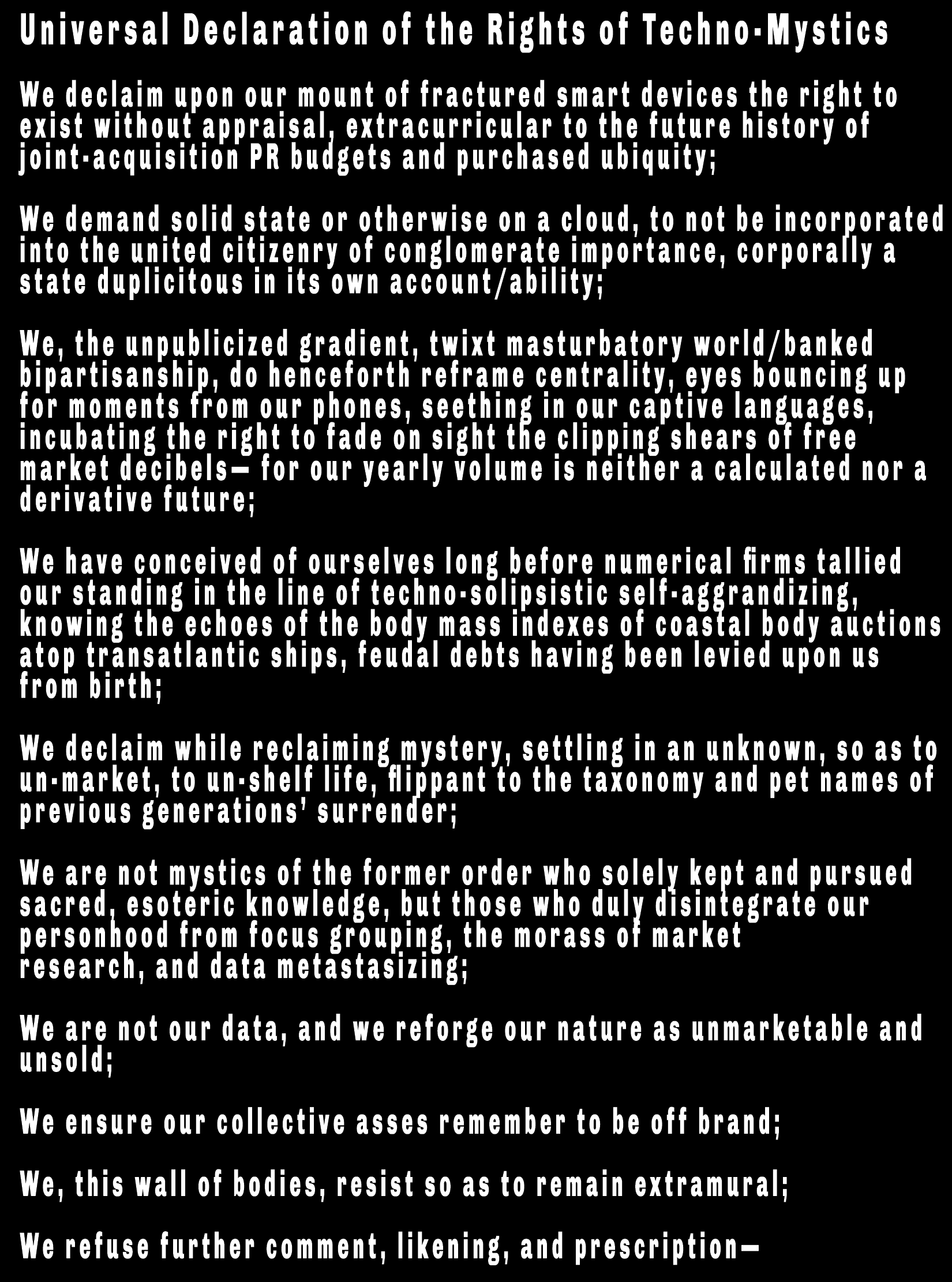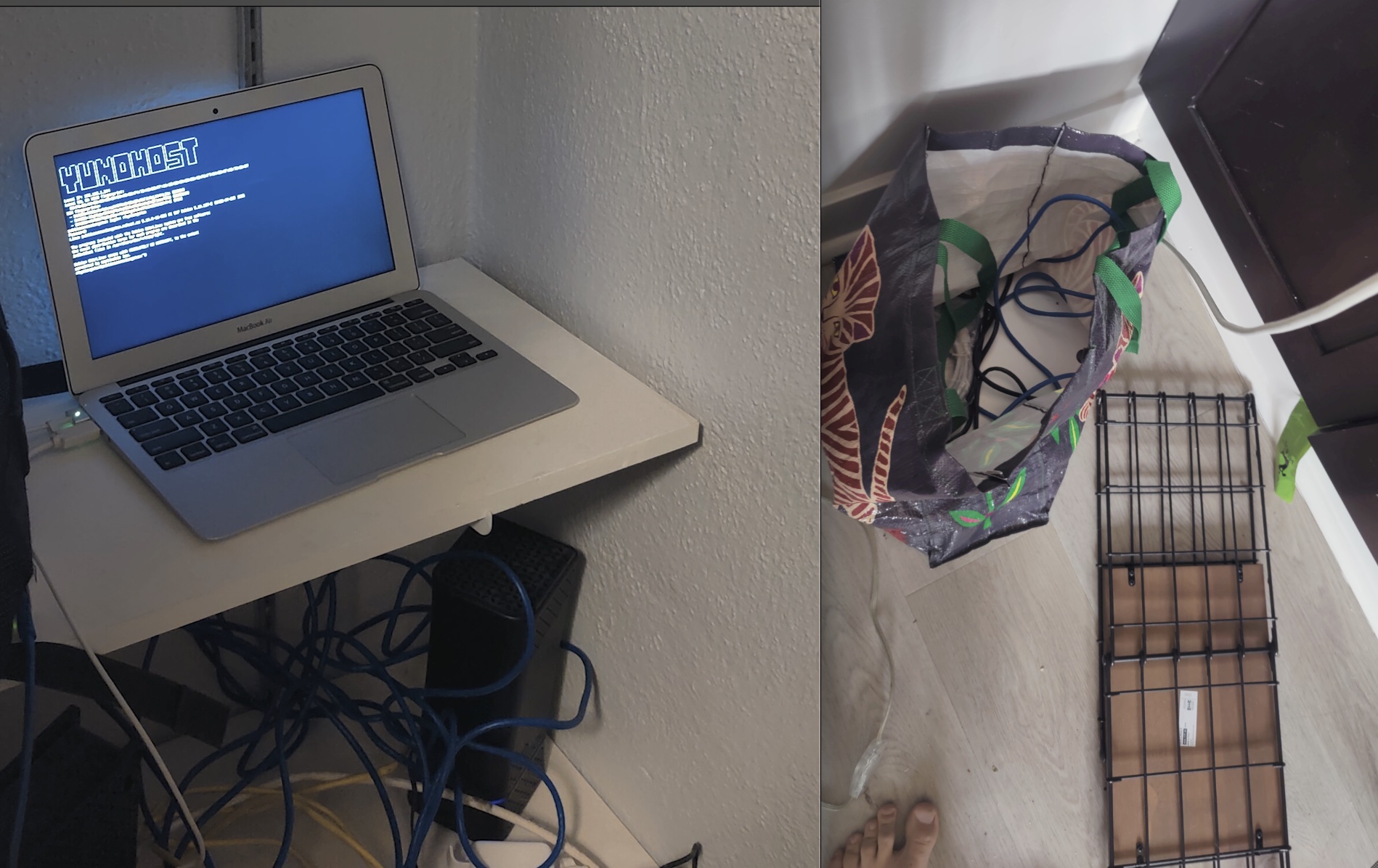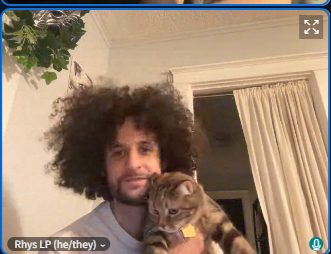Langstónia Public Access
Rhys Langston Podell
I came to study in my first class at SFPC as an artist and educator bristled by the conditions, terms, and limits by which art is shared in an internet-mediated culture built on intact colonial power relations. When the notion of a class project first pinged through the collective Zoom call, my instinct was to make a public-access style video channel, using my work as the seeds of a growing tree of artistic visuals. And then that thought’s negative twin immediately recoiled, in a sort of preemptive strike against what I perceived as my egotism trying to endlessly self-promote. Yet, as the weeks went on, my bicameral sense of self led me to see that a more community-based media channel could be conceptually and materially in league with the many meanings of Solidarity Infrastructures.

A certain axiom of the COVID-19 lockdown for artists and organizers has been the shuttering of physical spaces and venues, which were already waterlogged, if not entirely drowning financially (i.e. in Los Angeles, gradually nearly every musical venue has become now owned by Live Nation). Even for the less technologically-minded, the sequestration of activities into “social” media apps during quarantine laid threadbare how user uploads and inputs on endless timelines, queued up from servers that we don’t own or operate, could neither be a replacement for physicality, nor a techno-salvationist jig we could dance to and upload as recompense. For, it is no hyperbole to say in our pivot-to-video age we have only seen the exponentially tightened bindings of the algorithmically-biased and corporately consolidated platforms, digital spaces that would have us believe their shibboleth that they want to democratize the sharing of our motion and our pictures— and not just profit from tracking our entire lives.
Therefore, to culminate my 10 weeks in class, I am narrativizing the progression of my intentions to take the inkling of my project idea and make it public. It will not launch in any official way by the time this is available to the “visible internet”. However, the project does, by its nature, probe the question of what is public/visible, what functions as publicity, and explores the more foundational inquiry of what it means to share — creations and space. Cue the meme of the “secret third thing”, as phoenix risen from joking ashes of genuine frustration.
Langstónia Public Access ambles towards a revolving repository of really repping, flirting with open-source narrowcasting, hoping to broaden, like so:
A YouTube-style coffer of community motion pictures. Originally a sort of anti-MTV for/against the short form content era, it may evolve into that over time, from this page-and portal-based model.
Initially, it was conceived of as a seamless livestream, using my portfolio of music videos and artist movies as the foundational “block” of time. Then, the aim was for additional users to upload videos, extending this initial livestream length in new "artist blocks." However, due to technical constraints of my server architecture being older (a 2014 MacBook Air) the media apps I can use through the YunoHost catalog are limited to more “on demand” style functionality.
Therefore, the website will instead function as each new user having their own channel to populate with their original works, and a viewer being able to choose which channel they want to watch. Whereas the first concept was to give the same, single generic user name for every individual who would upload, this permutation of the original idea alters that inherent chaos and variability of who would upload first or to what extent— and instead adjusts for a certain control of individual curation within a media mosaic.
To merge the virtual ambition with our material reality, and to connect community in tactility…
Using one of the bits of non-internet government infrastructure I rely upon as an artist-turned-widget-salesman— the United States Postal Service— I will snail mail cards with the URL of Langstónia Public Access to an initial cohort, along with their log-in credentials. Instead of emailing or using a file sharing program like Dropbox, I aim for the cards to be at once a souvenir/physical artifact, an echo of communication before the ubiquity of high-speed internet, and a tactile confirmation/beginning of community bonds.
In addition to a login, the cards will be adorned with a poem I wrote back in 2018, titled “The Universal Declaration of the Rights of Techno-Mystics”, as a sort of stanza structured manifesto. In poetic terms, it hammers home my aim to “disintegrate our personhood from focus grouping, the morass of market research, and data metastasizing”.

Alternatively or in tandem, I would go to community and DIY events with a bag of cheap flash drives, labelled with a return (street) address. [Also, anyone reading this summary can reach out to be mailed said cards, if they are comfortable sending their physical mailing address.]
Now, lingering questions are a carousel in relation to the recruiting process.
In the original idea, the possibility of “uncontrollable” uploads via peer sharing of the single user credentials spoke to my vision of wresting control and questioning curation and moderation. I think of the many movies disappearing off of the streaming platforms as an example of curation functioning as de facto censorship, or corporate powers exercising control of what ideas and cultural expressions are available or not.
In this second conception of Langstónia Public Access, with users having unique sign ins, the progression of viewership is based in the agency of the viewer/visitor. So there is inherently more variability there, with a level of personal choice involved.
Now, there is a wrinkle to be added, if possible: making random users gain admin privileges to see if they would 1) notice and 2) use and/or abuse the ability to rewrite, delete, manage, etc.
As this project lives on, it remains to be seen how moderation or mediation will manifest. With the exception of deciding to personally exorcise any racist, sexist, transphobic, and otherwise harmful materials, I am troubleshooting ways that the recruited users themselves would recruit others, so that my involvement in maintenance could be minimal (outside of keeping the physical server running). I even welcome a kind of entropy if this ends at a few folks getting bored— or, on the flip side, I’m curious about the potential for mirrored servers or a more federated approach (if people would want take up those mantles).
The structures that surround me, difficulties and all are…
I recently moved, and though I brought my router in tow with the same ISP, the space within the pantry closet at my old house that contained the 2014 MacBook Air running YunoHost quickly turned to a bag on my new house’s floor. The disconnected server needs a new space to live in, as I configure my new living arrangements as a whole.

Being able to move into a place of my choice during a time of economic crisis (in my own personal economic crisis), I’ve lingered in thoughts about the illusion of permanence. When my server has a fixed space in this new home, it will be a more intentional, “essential” piece, like my musical instruments, paintings, and writing notebooks. Yet those things too, have moved and been pared down.
Additionally, during all this time setting up my server and this project, I made the choice to upgrade my internet after two years of receiving free service through the Affordable Connect Program. Though early on receiving this assistance I knew that my internet was being throttled post-net neutrality repeal (speed was slow and downloads and uploads would fail 25% of the time), it didn’t make financial sense to upgrade. After upgrading, my cost of living increases, as it were, but so does my capacity to fulfill the aims of projects such as this.
Being an independent and working class artist, I am no stranger to shouldering the load and covering the overhead of pursuits that tend to live in the red. As this moves forward, I am aware that this is a DIY, free-to-play model existing in a paradigm where creators (and basic users) on the internet are not compensated properly, if at all. As the scaffolding of Langstónia Public Access builds, warps, cracks, and stretches beyond my scattershot ideas, I’m ready to meet at the triumphant summit or imbroglio sinkhole the questions of access, publicity, and right to a (financial) return.

About the author:
Rhys Langston Podell is a freelance eccentric, using music, visual art, literature, and performance to bring forth critical assertions on comparative race and ethnicity, cultural reproduction, and education in digital and analog media. His work has earned praise from outlets like The NY Times, The LA Times, Bandcamp, SPIN, STEREOGUM, DJ Booth, and more. He remains the poet laureate of his living room, with a higher vertical leap than your favorite rapper.